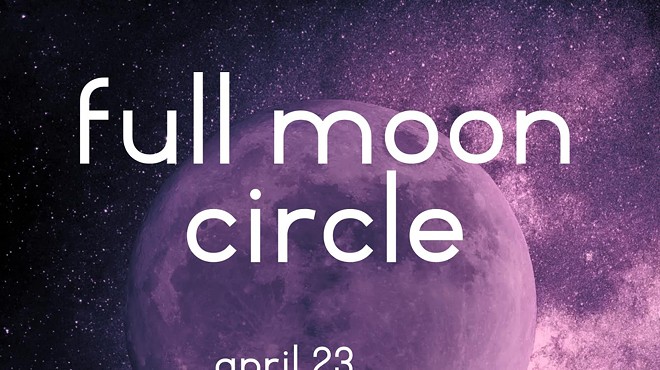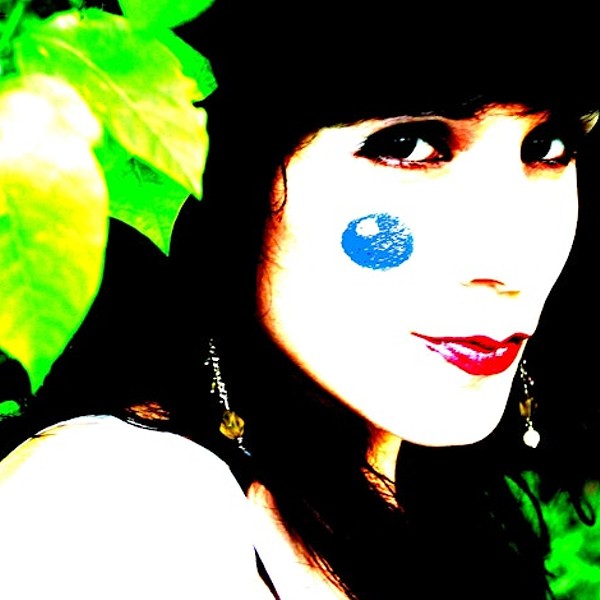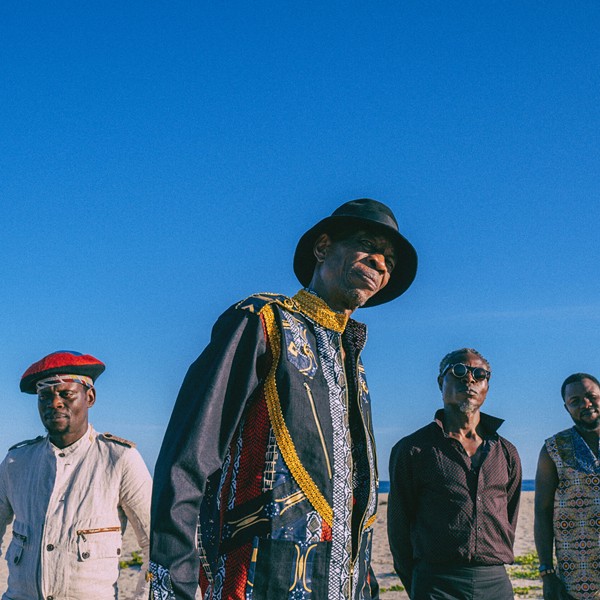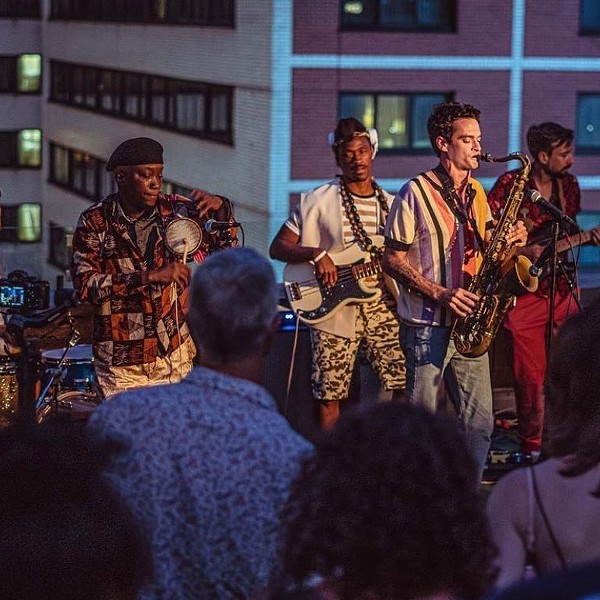Lying on a padded table in Beacon, buried under a blanket and eye pillow, I'm about to journey back in time. The destination is my infant self. A little like deep therapy, it won't be an easy voyage—but I have an experienced cruise director. Shamanic practitioner Eileen O'Hare, dressed in flowing white garments, is by my side. "We believe shamanically that lots of stuff happened to us in the past, both in this and other lifetimes, and that energy is in our auric field and can get stuck," explains O'Hare gently about the psychic spelunking we are about to do. "Usually we find out that there's some shame or blame, anger, bitterness, jealousy, or resentment that got put in place by the things that happened. So we're looking to go to those little bits and pieces of ourselves that feel traumatized. We literally journey to the past and do healing there. We go to the place where the hurt happened, and we recover and reclaim the lost part of the person's soul." It's a delicate job, and even O'Hare needs a few helpers. In her room filled with amethysts, feathers, incense, and herb bundles, she tells me she has called in "all the beautiful ones—the entities and energies from Source Energy to fairies to mountain spirits to river spirits." I can't see these elemental beings—and my Western mind can't quite wrap its neurons around ideas like past lives—yet I enjoy the image of iridescent wings fanning the air and guiding us along. With Disney travel companions like these, what could go wrong?
A Hybrid Healing Art
What I'm experiencing on this early May afternoon is called a "soul retrieval"—one of several offerings from the vast field of shamanism, which draws from myriad diverse cultures worldwide. Both a healing art and a spiritual practice, shamanism is unique in that it is at once ancient in provenance yet utterly contemporary in its postmodern multiculturalism. Of course, indigenous shamanism still exists in various countries—but in America the practice is, like the nation, a melting pot, drawing upon a range of traditions from South American to Asian to Celtic to African. The word shaman comes from the Tungus of North-Central Asia and means "he (or she) who knows." Naturally, the field attracts fierce arguments about what makes a shamanic practitioner "authentic." (How can we compare a New Jersey born healer to an Ecuadorian shaman with the spirit of the jungle in his blood?) Yet Western versions of the art, bolstered by training and experience, have their own merit and offer a range of alternative applications in health care and psychology. Some practitioners, for example, use soul retrieval and other methods to help military veterans with PTSD and those who suffer from anxiety or depression.
In my session with O'Hare, I get a taste of the art's therapeutic power. The journey begins with a thorough Native American sage "smudging" (or energy clearing), with fragrant smoke guided from my heart to my feet to both hemispheres of my brain ("so you can lose your mind and come to your senses," O'Hare says). Poetic invocations stream from her mouth, as does song. In addition to her roles as shamanic practitioner, teacher, and ceremonialist (yes, she does weddings), O'Hare is also a vocalist and guitarist in the kirtan duo BlisSing, with Garrison songstress Cat Guthrie. Music and sound are part and parcel to her work, which touches on all the senses—not to mention the sixth sense. She "sees" things throughout the session, from angels to light frequencies, opening up new dimensions and calling in the state of altered consciousness that is a hallmark of shamanism. There are some bizarre and downright funny moments, like when she douses me in a South American rum-and-paolosanto cocktail called agua de florida ("I'm going to reek of alcohol!" I say to my laughing guide). But the beautiful moments outnumber the strange, and the potential payoff from this journey—a lighter spirit instead of a heavy one—is promising.
Treating the Whole Person
In most other regions of the United States besides California, shamanism's rituals and ceremonies might not get as warm a reception as they do in the alternative-minded Hudson Valley. Yet the field has seen a lot of growth in recent years, says Highland-based international shamanic teacher Tom Cowan. "It's becoming more popular because with shamanism we're talking about healing the whole person, not just the body. Modern medicine ignores the spirit, the soul. More people have come to realize that we need a more integrative and holistic approach." In his own work Cowan blends Celtic spirituality with the "core shamanism" that he studied with Michael Harner, the now-octogenarian anthropologist known for bringing shamanism to the Western world in the 1970s and 80s. After years of research, Harner found that despite shamanism's cultural diversity, certain core principles and practices were universal, including journeys to other worlds, a signature feature of shamanism. "Today we don't have a shamanic culture—we're cut off from our indigenous ancestors and traditions," says Cowan. "So we can look to the core practices instead and not have to worry about, well, what culture is this coming from, and am I allowed to practice that?" He spent time with a Cherokee shaman and with some shamans in Siberia, and he has studied African shamanism. "But I'm not Cherokee. I'm not a Shipibo. I don't practice those [traditions]; I use them to inspire me."
One universally shared shamanic principle is the idea of a spirit world—a realm beyond the physical. In other words, there's a lot more out there than we think. "The shaman's view is that the spirits—of nature, trees, people, animals—give us life, and that world is just as real as the physical world," says Cowan. "In our culture we're not trained to think about the spirit world, so we think it's not there. I never try to prove it to somebody, but I sometimes tell people to think about consciousness, the spirit of life." Acknowledging that spirit exists in everything can have a transformative effect on the way we live. In an environmental sense, we need Earth-centered practices like shamanism more than ever. "The crisis we're having with global warming and extreme weather is turning people's attention to the fact that we need to treat the planet differently and better," says Cowan. "The land is a conscious being. It's spirit, too."
A Positive Shift
"There's an angel in the room with us, and she's so beautiful," croons O'Hare during our healing session. "She doesn't make herself visible very often." I imagine a cherub or Tinkerbelle perched at the foot of the treatment table, and I wish I could see her too. O'Hare tells me later that as a writer from a young age she has always heard voices, had vivid dreams, and been intensely imaginative. In her shamanic studies—training with healers in Peru, traveling to sacred mountains like Mt. Shasta and the Pitons, and spending hours in nature and in ceremony, sometimes with sacred herbs like psychoactive ayahuasca—she learned how to further expand her consciousness in this way, to see things that others do not see. A former career in television and advertising had left her with a 401K which she liquidated to spend on her shamanic training. "A lot of people would say I was crazy," she says, "but that money was misery in the bank to me. I transformed that misery into happiness."
Now O'Hare aims to bring the same positive shift to others through one-on-one or group sessions. "People come when they're stuck—in this job, in this marriage, in this way of life—when they can't move forward or when their energy doesn't feel good." She tells me about one client who used to be in banking and was very successful and wealthy. But after going through a divorce, he couldn't find work. "He came to me and discovered that there was a part of him that just felt so failed in the marriage that he couldn't find his 'get up and go,'" says O'Hare. "We had to go back to the past to find where he associated the failure of the marriage with the failure of the person. We went back deep in his childhood and reclaimed that bit of his soul. I'm happy to tell you that a few months later he was employed and doing much better and on his way." Yet O'Hare is quick to point out that shamanism is not therapy. "People are not coming to me to talk," says O'Hare. "I'm not clinically trained to deal with their mental issues. I work on a different level. I work with their energy body. I work with their heart, their soul."
Like Cowan, O'Hare practices a mix of shamanic styles, but instead of core shamanism she calls hers "Current Shamanism." "It's a play on words because 'current' means modern, but I'm also working with energy currents—from plants, the ground, the sky, the body." Though her training is primarily Peruvian, she also draws from the Lakota Indians, Buddhism, Hinduism. "I pull threads from every tradition that uplifts people's consciousness," she says. "To practice authentic Peruvian shamanism doesn't really work here—we don't live at 20,000 feet. I was incarnated in America, and I believe it's my job and my opportunity to weave a medicine blanket together from all these different traditions so that it works here, in America." With technology stitching the planet together like never before, it's a pivotal moment. "So many threads are being pulled from so many traditions, and they're being woven together into unique and powerful—and new—ways of being in the world."
Double-Clicking on the Heart
In our two-hour session together, O'Hare leads me from energy-clearing to heart-opening exercises, using music and nonjudgmental listening to draw my stories out. "When we double-click on the heart it opens up, and the psyche will speak to us," she says. Then, sensing some hurt that goes back to my infancy, she prepares me for the real journey, the soul retrieval. Using the pathway of the imagination, we travel back in time where she asks me to see my infant self. O'Hare tells me to this baby girl—a beautiful image of myself holding myself. "It could be that you've been holding onto tension in your body since the day you were born," she says. "We're inviting the body to release and relax that tension so it can be itself. I'm hearing the frequency of 'wheee!'" she says, motioning to playfully lift an invisible baby into the air, and ending on a note of joy. I leave smiling. I can't see fairies, but as I step out into the bright spring day, life pouring out of the newly opened leaves of every tree, I know for sure that spirit is all around me. How could it not be?
RESOURCES
Eileen O'Hare [email protected]
Tom Cowan Wp.riverdrum.com

















